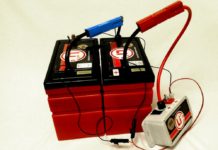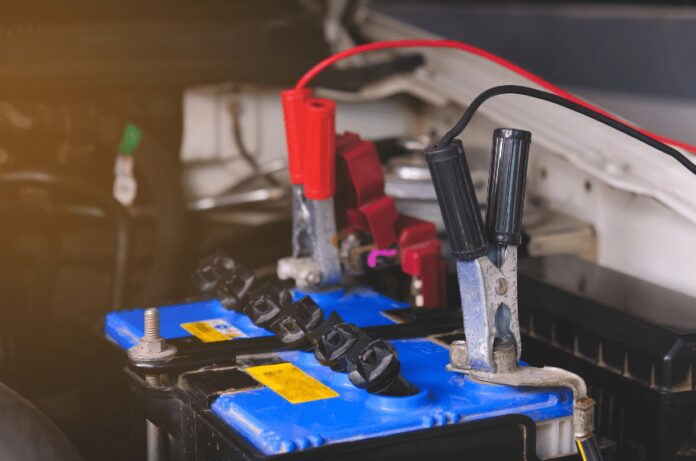
This might seem like a strange question. Few people evaluate the benefits of using 6 Volt batteries compared to 12 Volt ones. As far as we are concerned, however, especially when you intend to set up a fairly large battery bank, these 6 Volt cells could prove very useful, especially in economic terms.
Let’s first look at the inside of the two battery types. Both contain 2.1-volt cells. Three cells in the 6-volt battery and six cells in the 12 volt battery. The 6-volt battery has more room per cell than the 12-volt one, so the plates are thicker and will last longer. It should also be added that 6-volt batteries can be discharged deeper than any 12-volt deep cycle. We don’t want to complicate life, but we have to say it: In fact, most AGM, GEL, or “wet” 12 Volt batteries called deep cycle are not deep cycle, but in all respects to lower the cost of production, they are a hybrid of a deep cycle and starter battery, however, most 6 volt batteries are.
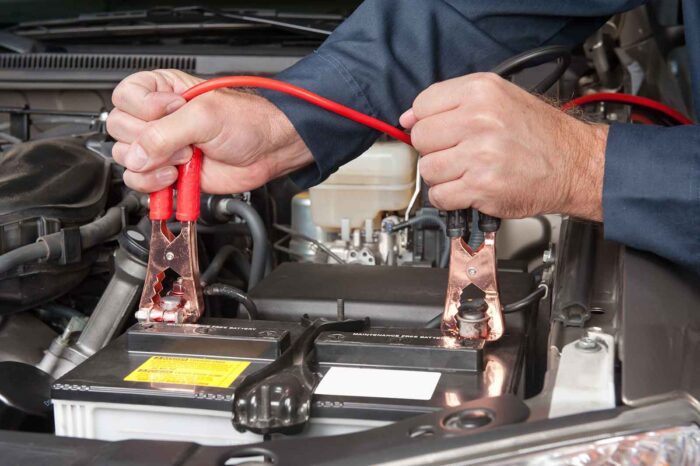
Also, if you only have two batteries (6 Volt batteries in series or 12 Volt batteries in parallel), placing them in series provides more effective charging capability, and assuming the physical dimensions of the two batteries are roughly equal, you will have approximately the same amount of power in watts with both configurations. However, this configuration means that the series cells will all charge to full capacity even if one is not as good as the others, while the 12-faced parallel cells will only charge to the level of the weakest cell. This lengthens the life of the whole bench.
If your style of motorhome travel is very dynamic, i.e., a few extended stops over days, then two 12 volt batteries will work just fine. But if you were planning to be parked for extended periods, you will need as much stored energy as possible, so it might be worth considering using four or even six 6-volt batteries.
As for Ampere-hours, when you connect two 6-volt batteries in series to get 12 volts, the voltage varies, but the Ah stays the same. So six 200Ah 6Volt batteries in series/parallel, wired to create a 12-volt bank, would give 6ooAh at the terminals.
The cycle life is the most important feature when buying a new deep-cycle battery for an RV. For example, there are 6 Volt batteries declared for a life of over 1500 cycles considering a discharge up to 40%, which degrades to 1000 cycles when the battery is used at 50%.
What is the Best Deep Cycle Battery Charger?
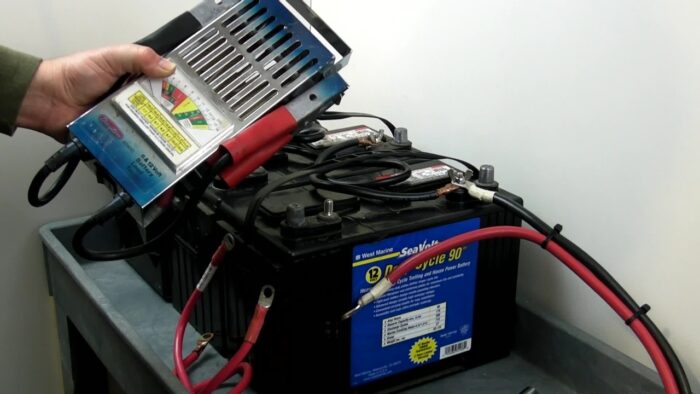
Recharging deep-cycle batteries is a relatively complex subject for those who do not know the world of batteries. The simplest recharging system is a “Converter” that transforms the 220V A.C. to generate approximately 13.2 Volts of Direct Current. A converter of this type is suitable for powering 12 Volt devices. Still, it is not a good charger, just as very often the alternator of the vehicle itself is not.
The microprocessor charger with IUIU charge curves is the best deep-cycle bank charger. These chargers are designed to charge lead-acid and other battery types based on specific algorithms for each battery type. But, the charger collects information from the battery and adjusts the current and voltage based on that information. This type of battery charger works in phases, regulating the Ampere and Voltage at the bench’s input based on specific times and charging windows. This allows the battery to be charged quickly, correctly, and fully.
When you are charging the battery, the bank voltage changes according to the charging phases we are going through. How do they work?
Phase 1: the battery charger delivers the maximum current while the voltage (Volt) increases progressively until it reaches the maximum value allowed by the product type. For GEL batteries, the limit is 14.4 Volts (28.8 Volts for 24 Volt systems). In the case of AGM technology, the limit can be higher, up to a maximum of 14.7 Volts (29.4 Volts for 24 Volt systems). The current supplied during this first phase should be neither too high (otherwise, it runs out too quickly) nor too low (the risk is of being unable to complete the procedure fully). The optimal current value equals one-tenth (or slightly more) of the battery capacity. Example: with 100Ah batteries, the recommended charging current is 10 Ampere. Not more.
Phase 2: once phase 1 has been completed, and the maximum charge voltage has been reached (pre-selected according to the type of battery), the current gradually decreases until it reaches very low values. When the battery is charged.
Phase 3: after phases 1. and 2., the charger automatically positions itself at a lower voltage than in point 2, and the current supplied by the device is infinitesimal, such as to compensate for the natural self-discharge of the battery. For VRLA: GEL/AGM batteries, the phase 3 voltage must be between 13.5/13.7 Volts (27/27.6 Volts for 24 Volt systems).
Installing the battery monitor in your motorhome
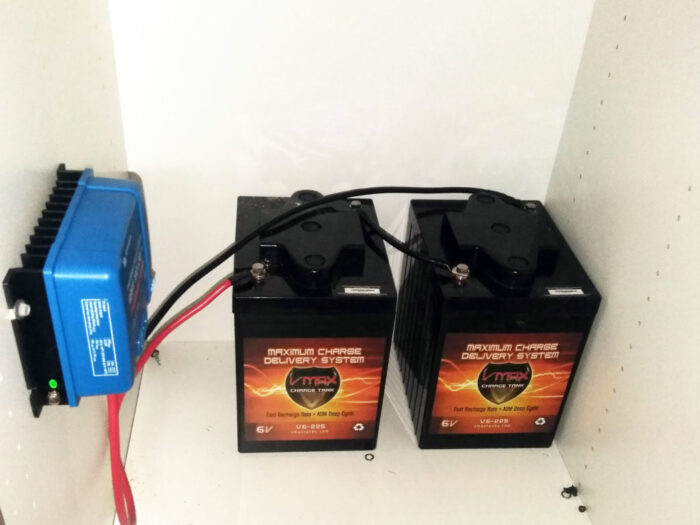
Installing a battery monitor could be the best investment you’ve ever made in your RV Too often, we limit ourselves to assessing the battery’s state of charge by measuring the voltage at the poles or, worse, by looking at 4 LEDs of different colors. A serious battery monitor shows the state of charge, voltage level, usage in hours, and the amount of Watts being drawn or entering the bank. The controller in this monitor calculates the amount of current being drawn into the battery bank during charging and drawing during discharging and then calculates the state of charge of the battery.
After having tried and seen several installed on various vehicles, we believe that the best battery monitor is the Renogy BMV-700 Battery Monitor. This device tracks the current flowing in and out of a battery bank. It uses a sophisticated algorithm to read the battery’s state of charge in percent remaining and amp hours remaining.
Service battery recharge with solar panels
A solar charging system is not complete without a charge controller. The charge controller is designed to do two main things within an RV solar panels system: optimize the charging of deep cycle batteries using the solar panels and prevent electricity from passing through the solar panels when not there. It’s the sun.
The best charge controller for a solar system is the MPPT type. This advanced charge controller tracks power by measuring voltage and regulating the current to achieve maximum power transfer under prevailing light conditions. Some low-cost charge controllers on the market (PWM) only produce an output voltage when sufficient light is available. With a diminishing light source, the charge controller shuts down and resumes when sufficient light levels are restored. These devices cannot use the marginal power present at sunrise and sunset.
The use of the latest charging technologies combined with the determination of the state of charge allows optimal battery maintenance and module power monitoring for up to 900 Wp of connected power. A large display informs the operator of all operating modes with the help of symbols. The state of charge is visually represented in the form of a tank. Data such as voltage, current, and state of charge can also be displayed in digital format as digits on display. We had tried this regulator on our Unimog truck and were happy with it.
The Renogy MPPT charge controller, especially in cloudy skies when the light intensity is constantly changing, optimizes the energy harvest by up to 30% compared to PWM controller and up to 10% compared to MPPT controllers slower. As far as we’re concerned, we’re using one of these regulators on the truck we’re traveling the world.
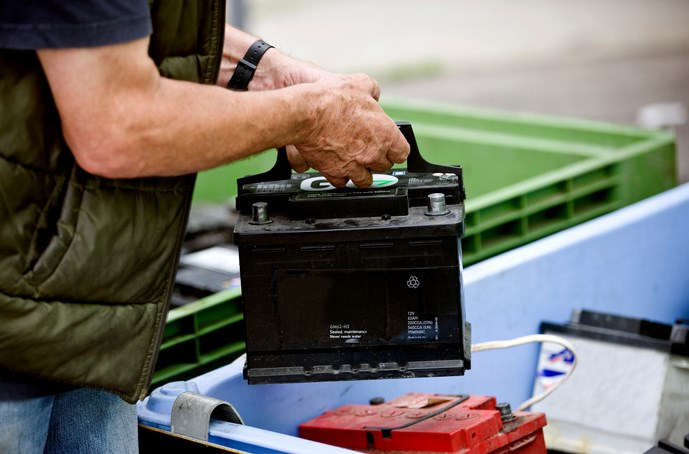
Deep cycle battery charging using a generator
Using a generator is the fastest way to recharge your batteries when parked. Most generators have a built-in 12V D.C. output. However, using this to charge a battery is almost a waste of time. The 12V D.C. output is usually limited, and the voltage can fluctuate and is unsuitable for effectively charging batteries.
The fastest way to charge the batteries is to connect the microprocessor charger to the generator’s 220 Volt A.C. outlet.
For example, if you need to recharge your camper’s batteries, a 500-watt portable generator feeds a 30 Ah multi-stage charger. Obviously, with a 2,000-watt generator and 80 Ah charger, it will take much less time to recharge the battery system, and therefore the noise produced by the generator will be less.



